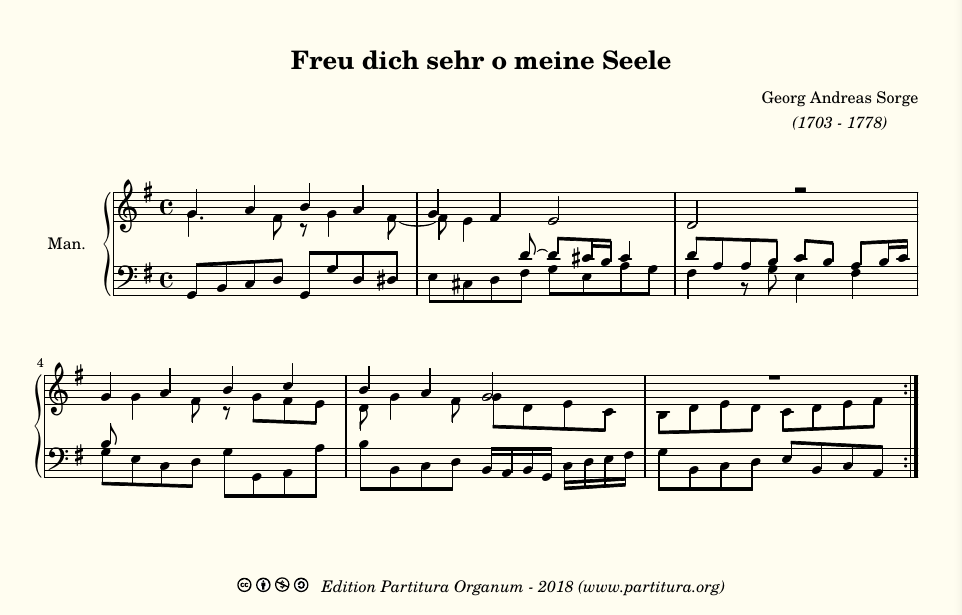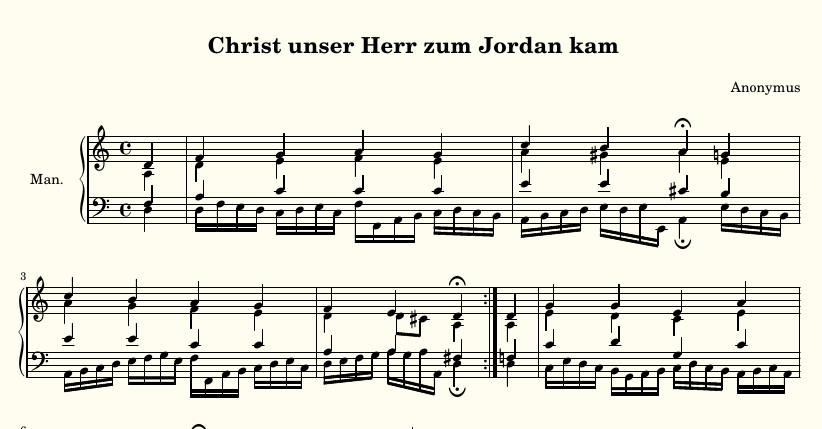Wilhelm Karges, François Roberday, Capricio in g
Manuscript Am.B. 340, available as digital copy at the Staatsbibliothek zu Berlin, was presumably written by Wilhelm Karges (1614 – 1699). The composers in this manuscript are sometimes given with there initials, but most pieces remain anonymous in the manuscript. Karges writes his own initials above three compositions, so we may safely assume he actually composed those three. A large part of the other compositions can be traced to originals written by Heinrich Scheidemann, Jan Pieterszoon Sweelinck, Johann Jacob Froberger, Sebastian Anton Scherer and François Roberday. And the remaining compositions are either originals by Karges or are based on originals I am not familiar with.
Karges adapts the compositions of the other composers to his liking or to his need. As a source of the originals this manuscript is not very useful. As a source for compositions that can be used during service, the manuscript however is highly useful. Karges adapted a large part of the pieces to be around three minutes long, and often provides means to easily play a repeat, if the piece needs top be longer. Karges does this by chopping up the longer pieces by for example Scheidemann and Sweelinck in several pieces, or by combining the shorter pieces by Roberday and Scherer into one piece. He always uses martial of one composer and does not mix music by several composers into one piece.
The pieces based on compositions by Scherer and by Roberday are particularly interesting. Regardless of the original titles of the compositions, Karges calls them Capricio or Ricercar. And he adapts the material to create a piece consisting of several movements, that often has the characteristics of a prelude and fugue of the early baroque. The first movement is often in a rather free style, followed by one, two or more short fugues. In the fugue part of the piece Karges often changes from binary rythm to ternary rythm and always concludes in binary rythm. If his source lacks suitable material to fit in this mold, Karges composes new material.
This Capricio is a good example of the general outline of these compositions. The first fugato is in binary rythm, the second in ternary rythm and the last two bars are again in binary rythm. This composition is largely true to Francois Roberdeay’s original “Caprice sur le mesme sujet de Fugue 1re”. Karges changes the voice leading in a few spots, omits one bar near the end of the second fugato and writes a different conslucion to the composition.
The recording was done with the Hauptwerk software and the sampleset, made by Sonus Paradisi, of the Janke organ in the Stadtkirche of Bückeburg (https://www.sonusparadisi.cz/en/organs/germany/buckeburg-janke-organ.html).




with regard to the Karges/Roberday piece, I am fist very surprised of this encounter and it would be interesting to know how these pieces circulated in Europe at that time. Second, I would think that there is really no need for a pedal part but of course this is just my opinion. Thank you for all this work!
PS By the way I just located a other modern edition of Hasslers’s “Vater unser” however tructated to 6 variationsand edited in Switzerland by Podoux in the Schola Cantorum series of editor CH. Huguenin .
I agree it is a bit of a guess wether or not the bass part is meant as a pedal part. Yet I lean towards the pedal part for two reasons. The first is that there are places where Karges writes the bass note an octave lower than in the original (and often the result can’t be played by hands, at least not by me). The second is that in other places Karges exlicitly indicates it when the bass part is to be played with the hands. And he does not do so in this piece. So I choose to render it as a pedal part. Yet I could create a manualiter score as well, so that anyone can choose for him/herself what he\she likes best.
hello and thanks for your answer! I really don’t thin,k there is any need for you to create a manualiter version, the already existing can be easily played so if desired; I refered rather to French custom of the time, where pedal is used very differently from German use and where often there was no 16foot available since pedal was used mainly for cantus firmus mainly, whoch does not mean that its (w/ french pedalboard) uses was so easy anyway (see Louis Coupein’s trios or Grigny fugues for example) .